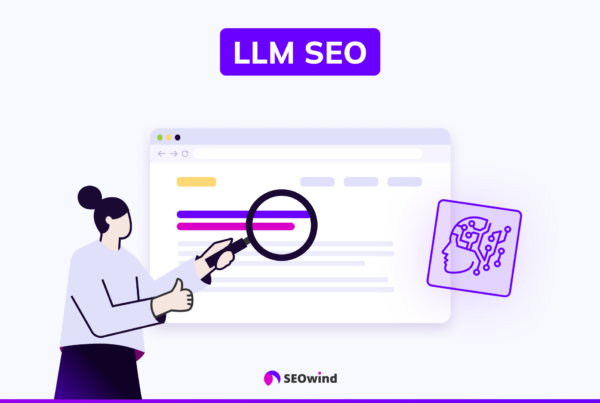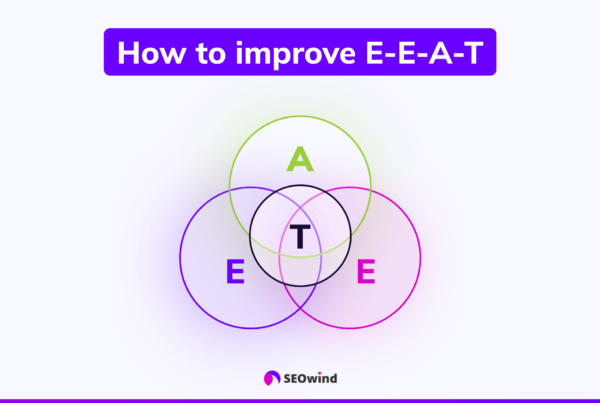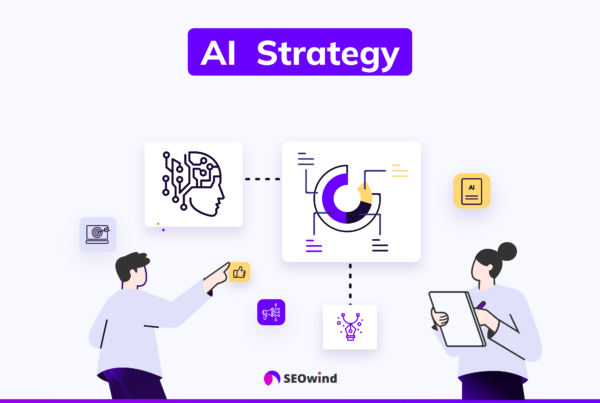Have you ever dreamt of multiplying your website traffic, not just incrementally, but by a factor of ten? It might sound like a fantasy, but with the transformative power of AI, this dream is within your grasp.
Forget the days of endless guesswork and laborious manual effort. AI is revolutionizing the digital landscape, offering intelligent solutions to propel your website to unprecedented heights. It’s not just about attracting more visitors, but the right visitors: those who are genuinely interested in what you offer and are more likely to convert into loyal customers.
AI and SEO: Bridging Technology and Visibility
The digital landscape is constantly changing, which means that the strategies we use to navigate it must keep pace. Search engine optimization (SEO) is no exception. AI SEO has emerged as a game-changer, offering unparalleled opportunities to boost website traffic and enhance online visibility.
But what exactly is AI SEO, and how does it bridge the gap between technology and visibility? At its core, AI SEO involves using artificial intelligence to optimize your website for search engines. It goes beyond traditional SEO practices by leveraging the power of machine learning and data analysis. AI can analyze vast amounts of data, identify patterns, and predict user behavior and search trends. This enables you to make data-driven decisions about your SEO strategy, ensuring you target the right keywords, create relevant content, and optimize your website for maximum visibility.
This technology is transforming the way we approach SEO in several ways:
- Keyword Research and Optimization: AI tools can identify high-performing keywords and track their performance over time, giving you valuable insights into what your target audience is searching for.
- Content Creation and Optimization: AI can assist in generating content ideas, writing drafts, and even optimizing existing content for better search engine rankings.
- Technical SEO: AI can identify technical issues on your website that may be hindering your SEO performance, such as broken links, slow loading times, and issues with mobile-friendliness.
- User Experience (UX): AI can analyze user behavior on your website and provide insight into how to improve the overall user experience, leading to increased engagement and better SEO results.
- Competitive Analysis: AI can track your competitors’ SEO strategies and identify opportunities for you to outrank them in search results.
Create AI Content with AI to Drive Traffic
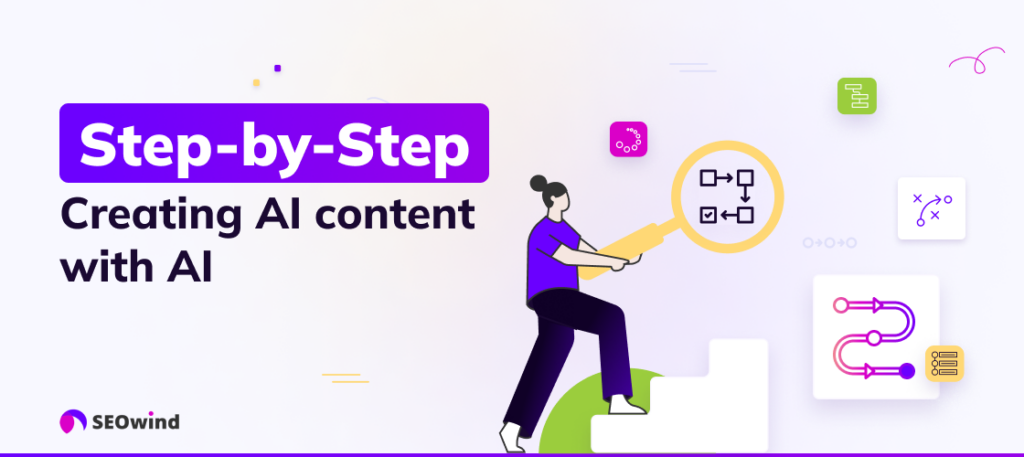
While traditional methods still hold value, the emergence of AI has opened up exciting new avenues for boosting website traffic. 65.8% of people find AI content equal to or better than human writing, suggesting that AI-generated content can effectively attract and retain website visitors (Source: AuthorityHackers). As such, we need to understand how we can leverage AI to create high-quality content that attracts visitors and keeps them engaged.
CyborgMethod™
The CyborgMethod™ is a revolutionary approach to content creation that combines the strengths of both AI and human expertise. Think of it as a symbiosis between human creativity and AI’s analytical capabilities.
Data + AI + Human Experience = Quality Content
The core principle behind the CyborgMethod™ is simple yet powerful: Data + AI + Human Experience = Quality Content. Let’s break down each element of this equation:
- Data: AI thrives on data. By feeding AI algorithms with relevant data about your industry, target audience, and competitors, you equip the tool to generate insightful and valuable content.
- AI: AI tools like SEOwind use advanced algorithms to analyze data, identify trends, and generate content outlines, drafts, and even complete articles. The efficiency of AI is truly remarkable. For example, ChatGPT gained a staggering 1 million users within its first five days. Imagine the possibilities for your website traffic with such powerful tools at your disposal.
- Human Experience: While AI can do wonders, the human touch elevates content. Your unique insights, expertise, and brand voice are irreplaceable. Adding your personal touch to AI-generated content ensures it resonates with your audience and reflects your brand identity.
Why This Strategy Works
The CyborgMethod is more than just a trendy concept. It’s a proven strategy for generating traffic. Here’s why it works so well:
- Efficiency: With AI, every step of the content creation process becomes more efficient. From keyword research to content outlines and drafts, AI streamlines the workflow, allowing you to focus on the strategic and creative aspects.
- High-Quality Content: SEOwind produces high-quality, well-structured, and insightful content based on data and research. This ensures your content is engaging, informative, and valuable to your audience.
- Traffic Generation: By incorporating SEO best practices and allowing you to add your own expertise, SEOwind ensures your content is optimized for search engines, driving organic traffic to your website.
- Uniqueness: AI tools like SEOwind consider your brand voice, company and product data, and relevant statistics and quotes to create content that is unique to your brand. This helps you stand out in the crowded digital space.
- Value: Combining AI-powered insights with your human touch creates content that is truly valuable to your audience. This not only attracts visitors but also keeps them coming back for more.
Step 1: Leverage AI for Unmatched Keyword Research
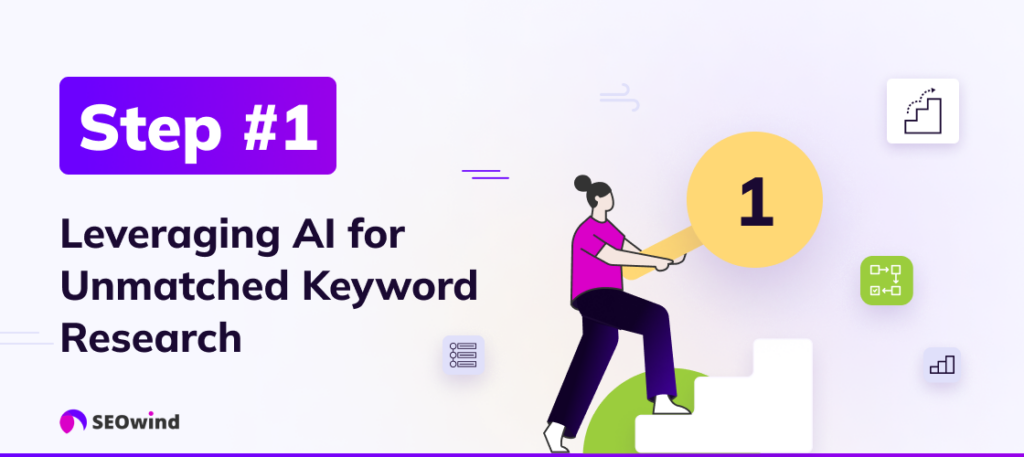
The first stop on our journey is keyword research. It’s the cornerstone of driving organic traffic and achieving online visibility. Let’s explore how AI can revolutionize this crucial step.
Traditional keyword research methods often involve brainstorming, using keyword research tools, and analyzing competitor strategies. While these methods still have value, they can be time-consuming and don’t always provide the most comprehensive results. This is where AI steps in, offering a data-driven approach to uncover hidden keyword opportunities.
Step 2: Understand Search Intent with AI
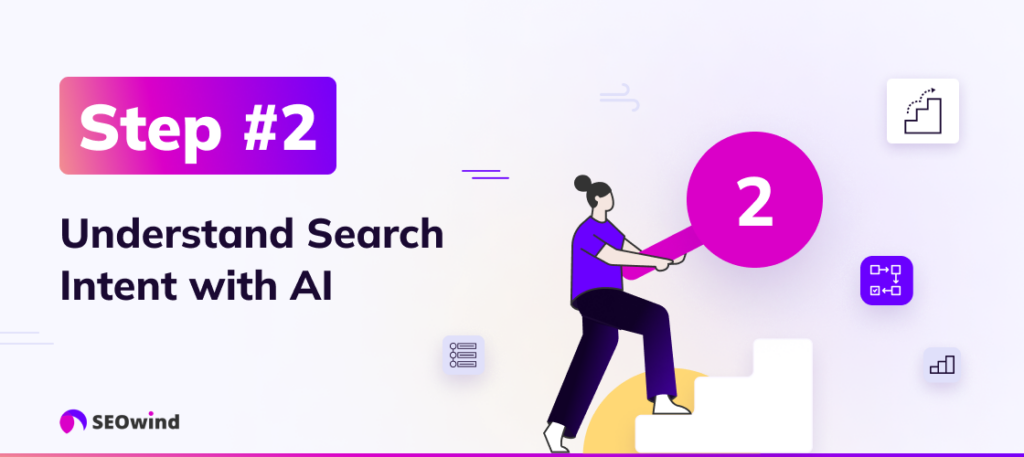
After nailing down your keywords, it’s time to dig deeper and understand the motivation behind those searches. It’s not just about knowing what people are searching for; we need to understand why they’re searching for it. And AI can be your secret weapon for deciphering search intent.
Think about it: someone searching for “best running shoes” could have various intentions. They might be looking for reviews, comparing prices, or even seeking information on choosing the right shoe for their foot type. Each of these intents requires a different approach to content.
Luckily, AI tools can analyze search results and identify patterns to help you understand the dominant intent behind a keyword. They categorize keywords into different intent types, such as:
- Informational: The user is seeking information on a specific topic. For example, “What is content marketing?”
- Navigational: The user wants to find a specific website or page. For example, “Facebook login.”
- Transactional: The user intends to make a purchase or complete a specific action. For example, “buy Nike running shoes.”
By understanding search intent, you can tailor your content to directly address the user’s needs and increase the likelihood of attracting relevant traffic. Let’s say the dominant intent for “best running shoes” is informational. In this case, you might create a comprehensive guide for choosing running shoes and cover topics like foot type, running style, and shoe features. This targeted approach is far more effective than creating a generic product page.
Step 3: Do Content Research and Identify Who You’re Competing With
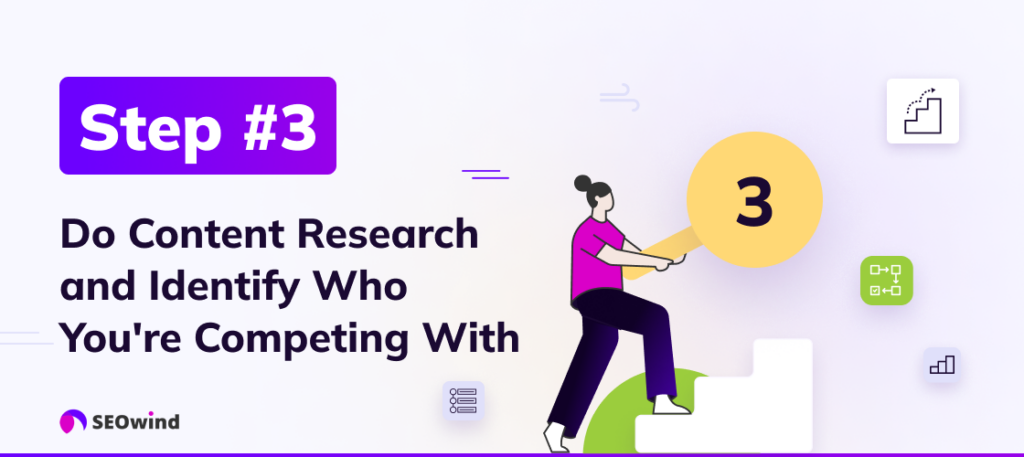
So, you’ve got your keywords sorted and a grasp of what people are looking for. Now, it’s time for some reconnaissance into your competition! This means understanding the existing content landscape and identifying your main competitors.
First things first, we need to see what’s already ranking for your target keywords. Just type those keywords into a search engine and see what pops up. Look at the top-ranking pages and analyze what they’re doing right. Are they using long-form content packed with information? Are they incorporating visuals or videos? Are they structuring their content in a way that’s easy to read and navigate? Take notes and see what you can learn from their approach.
Next, identify who’s behind those top-ranking pages. These are your main competitors. Check out their websites and get a feel for their overall content strategy. What topics do they cover? What’s their tone of voice? How often do they publish new content? Understanding your competitors’ strengths and weaknesses will help you develop a content strategy that sets you apart. Remember, we’re not here to copy; we’re here to conquer!
Step 4: Draft your AI Outline
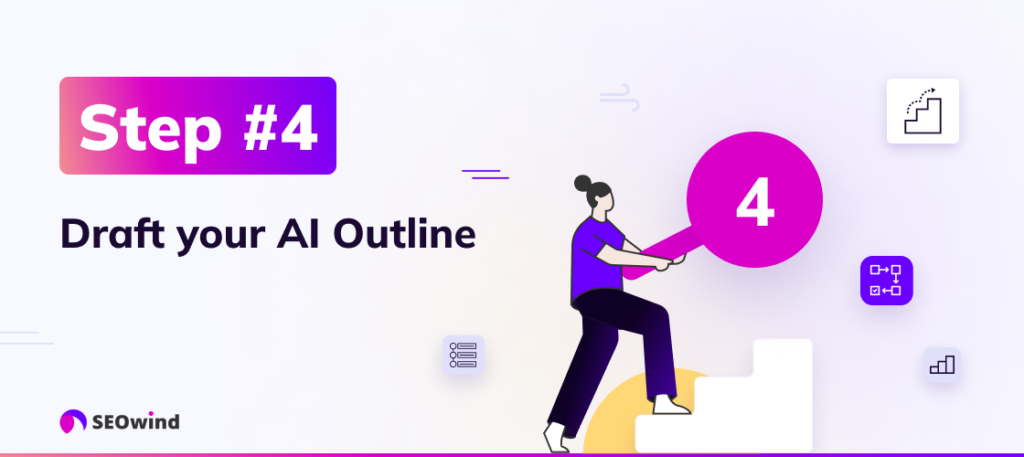
Now that you have your keywords, understand the searcher’s intent, and know your competition, it’s time to build the framework for your content. This is where an AI outline comes in handy. It functions as the skeleton of your article, providing the structure and direction you need.
Some AI writing tools offer outline generation features. You feed them your keyword and target audience, and they’ll suggest a structure, complete with potential headings and subheadings.
But here’s the thing: While AI can be a fantastic starting point, adding your own insights and expertise is essential. You’re the expert in your field, and you have a unique perspective to offer.
Review the AI-generated outline and see how it aligns with your content goals. Does it cover all the essential points? Are there any gaps that need filling? Don’t hesitate to add, remove, or rearrange sections as required. This is your outline, and it should reflect your vision for the content.
Step 5: Add Your Insights
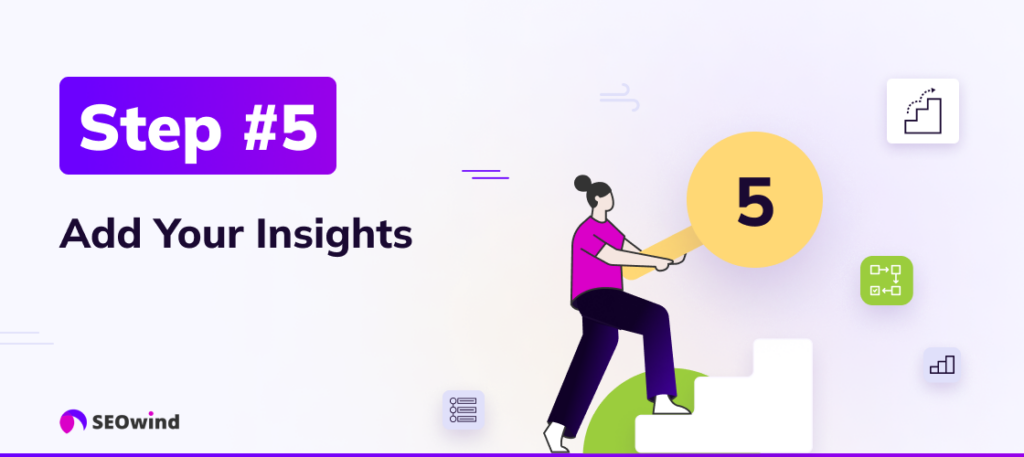
At this stage, you’ve got a solid foundation built with keyword research, search intent analysis, competitor insights, and a comprehensive AI-generated outline. So, it’s time to infuse the content with your unique expertise and perspective. Think of it as adding your secret sauce – the elements that make your material stand out.
Here are some effective ways to weave your insights into an AI-generated framework:
- Personal Anecdotes and Case Studies: Do you have any real-life experiences or success stories that relate to the topic? Sharing these anecdotes can make your content more relatable and engaging for your readers. For example, if you’re writing about using AI for email marketing, you could share a case study of how you used AI to personalize an email campaign and increase open rates significantly.
- Unique Perspectives and Opinions: Don’t shy away from expressing your views on the subject matter. This is what sets your content apart from generic AI-generated material. Offer your analysis, interpretations, and predictions based on your understanding of the industry and target audience.
- Expert Tips and Tricks: Share actionable advice and practical tips that your readers can implement right away. These could be based on your own experiences or on industry best practices. For instance, if you’re discussing AI-powered content optimization, you could provide specific tips on how to use AI tools to improve content readability and SEO.
- Address Potential Concerns and Challenges: Acknowledge any potential drawbacks or limitations associated with the topic. By addressing these concerns head-on, you demonstrate transparency and build trust with your audience. For example, you could discuss the ethical considerations of using AI in content creation or the potential for bias in AI algorithms.
Remember, your insights are what make your content valuable and unique. By incorporating them strategically, you can elevate your AI-generated content from good to exceptional.
Step 6: Write content with innovative AI tools (like SEOwind)
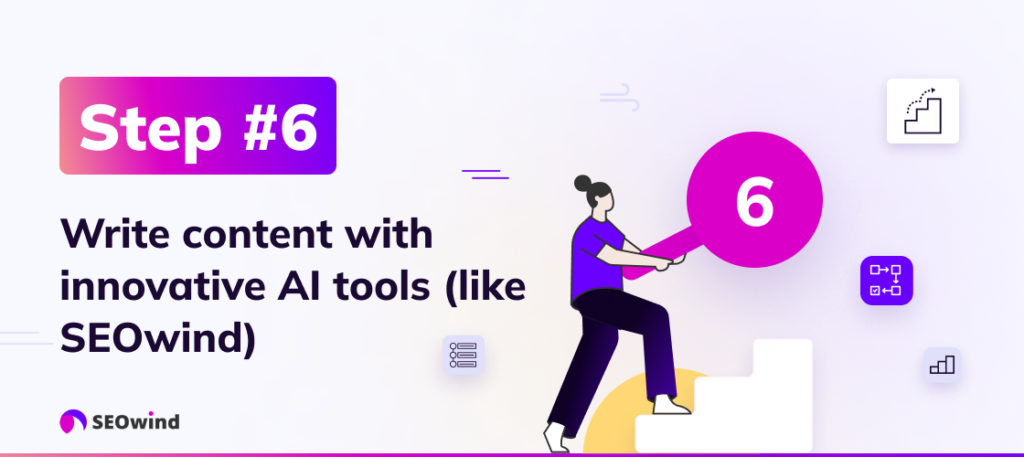
Once your outline incorporates data-driven insights and your own expertise, it’s time to start crafting the content itself. However, instead of staring at a blank page, why not leverage the power of AI writing tools like SEOwind? These tools can help you generate high-quality content quickly and efficiently, saving you time and energy. Let’s explore how you can use SEOwind to create compelling content that resonates with your target audience.
SEOwind utilizes advanced algorithms trained on vast amounts of data to understand language patterns, search intent, and SEO best practices. You can input your outline, keywords, and any specific instructions or preferences you may have. The AI will then generate content that aligns with your requirements.
However, AI content tools cannot replace human creativity and expertise. Use them as powerful allies that can assist you in the content creation process. AI-generated content should be a first draft, a starting point that you can refine and enhance.
Step 7: Review and add the human touch
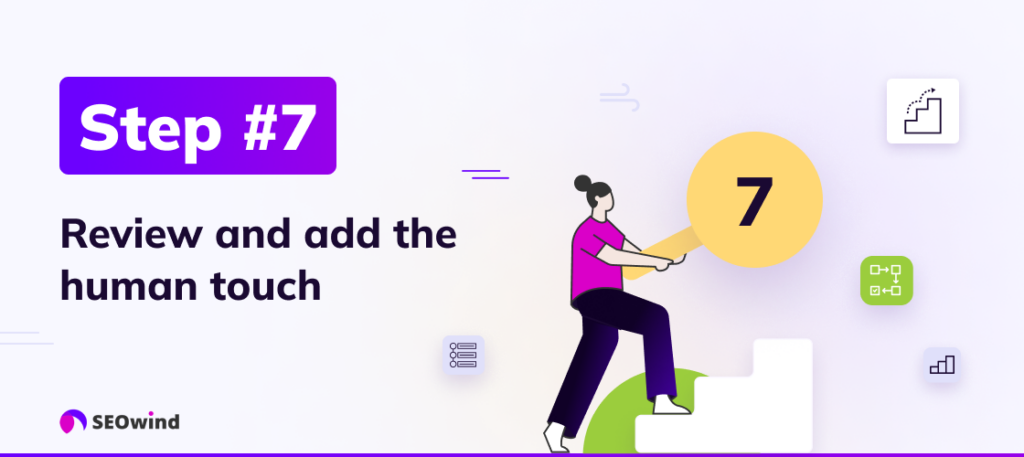
AI excels at processing data and rapidly generating content but can’t replicate the human element. While impressive, AI-generated content lacks the nuances of human emotion, creativity, and critical thinking. This is where you, the content creator, come in.
After your AI writing tool has worked its magic, it’s time to roll up your sleeves and get to work. Read through the generated content and ensure it aligns with your brand’s voice and style. Does it resonate with your target audience? Does it convey the intended message effectively? More importantly, does it sound human?
Look for opportunities to add your personal insights, experiences, and unique perspective. Infuse the content with your brand’s personality and values. People connect with people, and injecting yourself into the AI-generated content will make it more relatable and engaging for your readers.
Optimize Content with AI for Ultimate Engagement and Retention
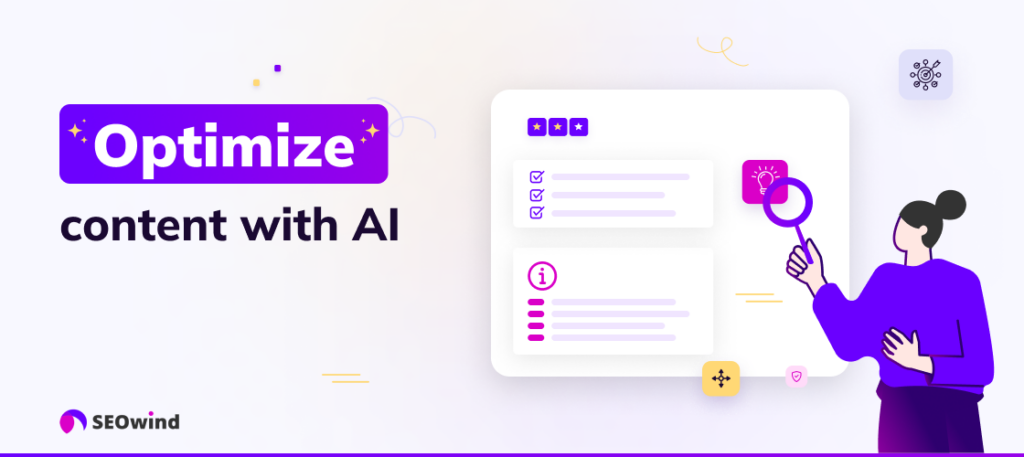
Creating exceptional content is only half the battle. To truly harness the power of your content, you need to optimize it for search engines and user engagement.
AI-powered tools can analyze your existing content to identify areas for improvement. They can suggest relevant keywords to weave into your text, ensuring your content aligns with what your target audience is searching for. However, it’s not just about keywords; AI can also assess the readability and tone of your writing, helping to refine your content so that it resonates with readers and keeps them coming back for more.
But the optimization voyage doesn’t end there. AI can also help you:
- Craft compelling headlines and meta descriptions: These are your first impressions on search engine result pages, so they need to be captivating. AI tools can generate informative and enticing options, increasing the likelihood of users clicking through to your website.
- Optimize images and videos: Visual content is crucial for engagement, but large files can slow down your website. AI can compress images and videos without compromising quality, ensuring a seamless user experience.
- Personalize content recommendations: By analyzing user behavior, AI can suggest related articles or products that align with their interests, keeping them engaged and encouraging further exploration of your website.
- A/B test different content elements: Not sure which headline or call to action will perform better? AI-powered A/B testing tools can help you experiment and identify the most effective options to drive conversions and boost engagement.
AI-Powered Personalization: A New Era of User Experience
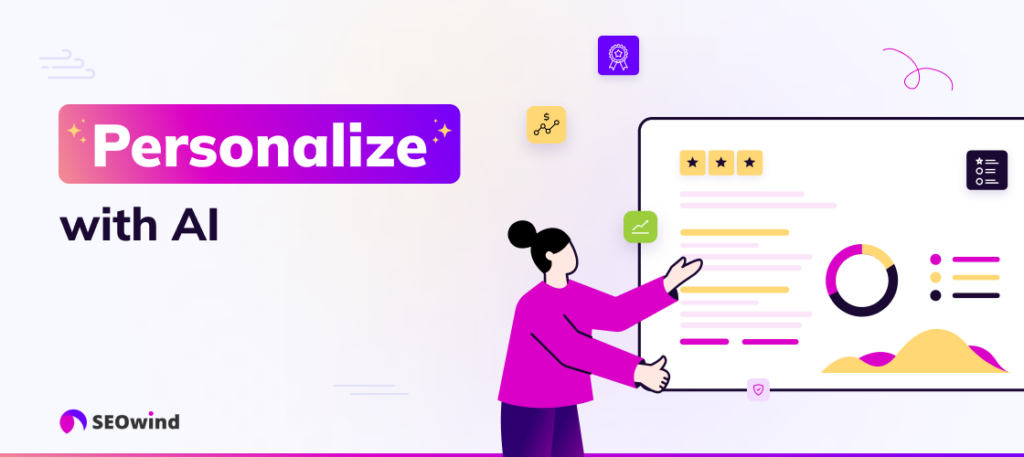
The way we interact with technology is constantly evolving, especially when it comes to our online experiences. Thanks to the advancements in AI for websites, we can now deliver a user experience that is highly personalized and incredibly relevant to individual needs. Imagine a website that adapts to your preferences, recommends products you might actually like, and even anticipates your future actions. This is the power of AI-powered personalization.
So, how does it work? AI algorithms analyze mountains of data, including browsing history, past purchases, and demographic information, to create detailed user profiles. These allow websites to tailor their content, product recommendations, and layouts to each visitor.
Let’s break down some of the key benefits of using AI for personalization:
- Increased Engagement: By presenting users with content and offers that resonate with their interests, you’ll naturally keep them engaged for longer periods.
- Improved Conversion Rates: When users find what they’re looking for quickly and effortlessly, they’re more likely to convert into paying customers.
- Enhanced Customer Loyalty: Personalized experiences make users feel valued and understood, fostering stronger connections with your brand and encouraging repeat business.
- Reduced Bounce Rates: By providing relevant content immediately, you’ll minimize the chances of users leaving your site due to irrelevant or uninteresting information.
AI-powered personalization represents a fundamental shift in how we approach website design and the user experience. By harnessing the power of AI, you can create a website that caters to individual needs, fosters deeper connections, and ultimately drives significant growth for your business.
Elevate Your Social Media Strategy with AI
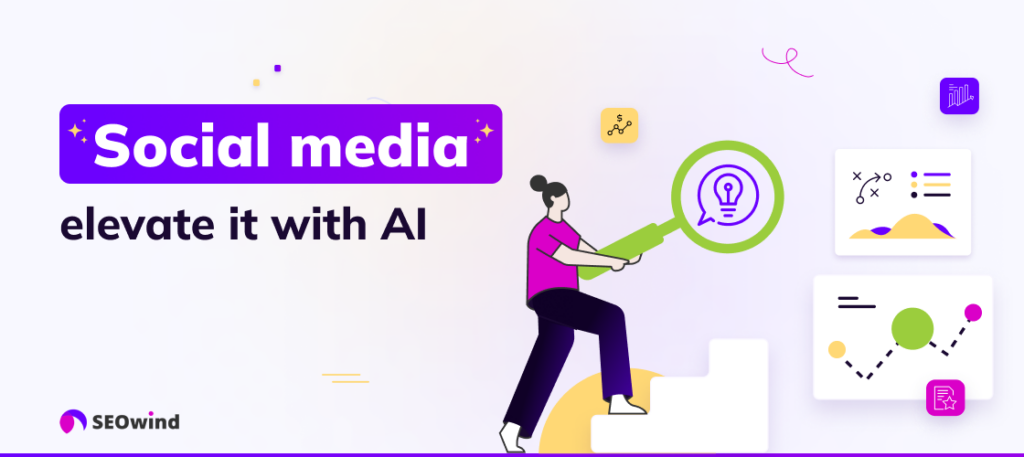
Social media is where people gather, share stories, and connect. As a business, having a presence in this space is crucial. But with so much noise and activity, how do you ensure your voice is heard? This is where AI acts as your megaphone to amplify your message.
AI tools can analyze social media data and provide insights into audience demographics, preferences, and trending topics. Imagine having a personal assistant who can tell you precisely what your audience is interested in, when they’re most active online, and what kind of content resonates with them. AI empowers you with this knowledge, allowing you to tailor your social media strategy for maximum impact.
Let’s explore some of the ways AI can elevate your social media game:
- Content creation: Are you struggling to come up with fresh and engaging content ideas? AI content generation tools can help brainstorm new topics, write captions, and create visual content like images and videos.
- Scheduling and automation: Maintaining a consistent posting schedule is essential for social media success. AI-powered scheduling tools can automate the process, ensuring content reaches your audience at the optimal time.
- Social listening: AI can monitor social media conversations, identifying mentions of your brand, products, or industry. This valuable information helps you understand how people perceive your brand and respond to feedback effectively.
- Ad targeting: AI algorithms have the ability to analyze user data to target your social media ads with laser precision. This means your ads are shown to the people most likely to be interested in your offerings, maximizing your return on investment.
- Performance analysis: AI tracks and analyzes your social media performance, providing insights into engagement, reach, and conversions. This data-driven approach allows you to measure the effectiveness of your strategies and make informed decisions about future campaigns.
Reinvent Email Marketing with AI
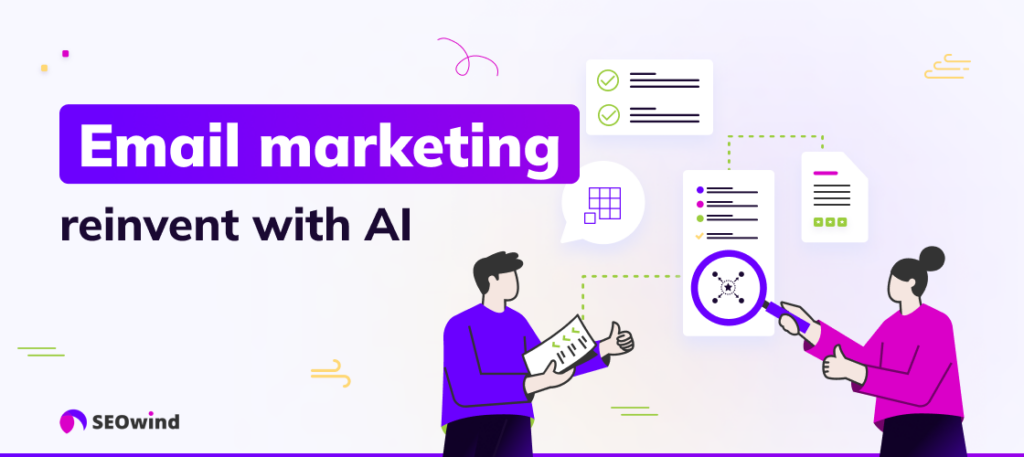
For years, email marketing has been a cornerstone of successful digital strategies. According to HubSpot, “Email marketing is one of the most effective channels for driving conversions, with a 2.8% conversion rate for B2C brands and a 2.4% conversion rate for B2Bs.” It’s a powerful tool for nurturing leads and driving conversions. However, simply sending out emails en masse isn’t enough. That’s where AI steps in, offering a range of tools to personalize, optimize, and automate your email campaigns like never before.
Let’s take a look at some specific examples of how AI can transform your email marketing:
- Personalized Subject Lines: AI can analyze past data to identify subject lines that resonate best with your audience, leading to higher open rates. This level of personalization can significantly improve engagement and click-through rates.
- Content Optimization: AI-powered tools can analyze your email content and suggest improvements to enhance readability, clarity, and overall effectiveness. They can even help you identify the optimal time to send your emails based on when your audience is most likely to engage.
- Dynamic Content: AI enables you to create dynamic email content that adapts to each recipient’s preferences and past interactions. This means you can deliver highly relevant content that speaks directly to their needs, increasing the chances of conversion.
- Automated Workflows: AI can automate repetitive tasks such as email scheduling, segmentation, and A/B testing, freeing up your time and resources for more strategic initiatives.
- Predictive Analytics: AI can analyze vast amounts of data to predict future customer behavior, allowing you to anticipate their needs and tailor your email campaigns accordingly. This can lead to more targeted and effective marketing efforts.
- Improved Deliverability: AI algorithms can help ensure that your emails land in your recipients’ inboxes rather than their spam folders. They do this by analyzing factors like email content, sender reputation, and engagement rates, making adjustments to improve deliverability.
By embracing AI in your email marketing strategy, you can create more personalized, engaging, and effective campaigns that drive better results. So, whether you’re a seasoned email marketer or just starting, consider exploring the power of AI to take your campaigns to the next level!
Unlock Predictive Analytics for Strategic Decision-Making
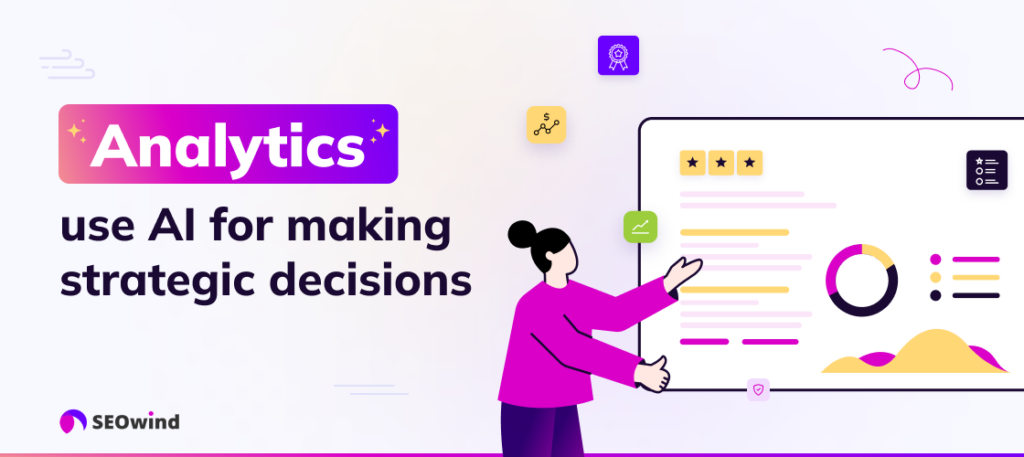
Predictive analytics is like having a crystal ball for your website traffic. It uses historical data and clever algorithms to predict future trends and user behavior. This isn’t about fortune-telling; we’re making data-driven decisions to optimize our websites’ performance and attract more visitors.
Imagine you run an online clothing store. By analyzing past data, you might discover that visitors from a specific region tend to purchase more winter wear during the holiday season. Armed with this knowledge, you can strategically target your marketing campaigns to that region, offering promotions on winter clothing and boosting your chances of increased sales.
AI-powered predictive analytics tools can provide invaluable insights like:
- Traffic patterns: Understanding when your website experiences peak traffic times allows you to allocate resources effectively. For instance, you can ensure your servers can handle the increased load during peak hours to prevent website crashes and keep visitors happy.
- Conversion rate optimization: By identifying which website elements lead to the most conversions, you can focus on enhancing those areas. It could be a compelling call to action button or a streamlined checkout process. AI helps you pinpoint what works best.
- Customer segmentation: Not all website visitors are the same. AI can help you segment your audience based on demographics, interests, and behavior. This allows for personalized marketing campaigns that resonate with specific groups, increasing engagement and conversions.
- Content performance prediction: AI can analyze the performance of your existing content and predict how future content might fare. This helps you tailor your content strategy to create assets that are more likely to attract and engage your target audience.
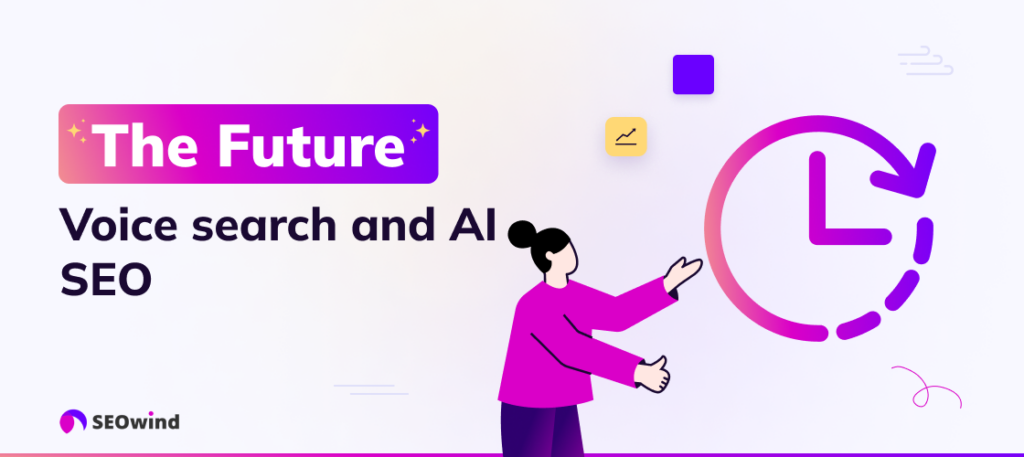
The way we interact with technology is constantly changing, and voice search is at the forefront of this revolution. With the rise of smart speakers and virtual assistants like Siri and Alexa, people increasingly use voice commands to search the web. As a savvy website owner, it’s crucial to adapt your SEO strategy to this changing landscape. But how exactly can you optimize your website for voice search? Luckily, AI has got your back!
By analyzing voice search data, AI-powered tools identify patterns and trends. This information helps you understand how people phrase their voice queries, which often differ significantly from traditional text-based searches. For example, someone might type “best Italian restaurants” in a search bar but ask, “What are the best Italian restaurants near me?” when using a voice search. By leveraging AI insights, you can tailor your content to match these natural language patterns and increase your chances of appearing in voice search results.
Half of U.S. mobile users use voice search daily, indicating the growing prevalence of AI-powered voice assistants in everyday life. This statistic alone underscores the importance of optimizing your website for voice search. By embracing AI-powered SEO strategies, you can ensure your website remains visible and accessible to this expanding audience.
The Synergy Between AI and Omnichannel Marketing Strategies
We’ve explored several ways AI can elevate your digital marketing, from content creation and SEO to social media and email marketing. Now, let’s look at the bigger picture and weave these threads together into a cohesive tapestry of omnichannel marketing powered by AI.
Imagine a potential customer discovers your brand through an engaging Instagram video ad that was optimized and targeted using AI. Intrigued, they click through to your website, where AI-powered personalization greets them with product recommendations based on their interests and browsing behavior. Later, they receive a targeted email showcasing similar products and offering a discount, further enticing them to make a purchase. This seamless, integrated experience across multiple channels is the essence of omnichannel marketing, and AI is the conductor orchestrating this symphony.
AI’s ability to analyze data allows it to identify patterns and trends in customer behavior, enabling you to accurately predict their needs and preferences. This empowers you to deliver the right message at the right time on the right platform, creating a consistent and personalized customer journey that fosters brand loyalty and drives conversions.
Implementing and Integrating AI Technologies on Your Website
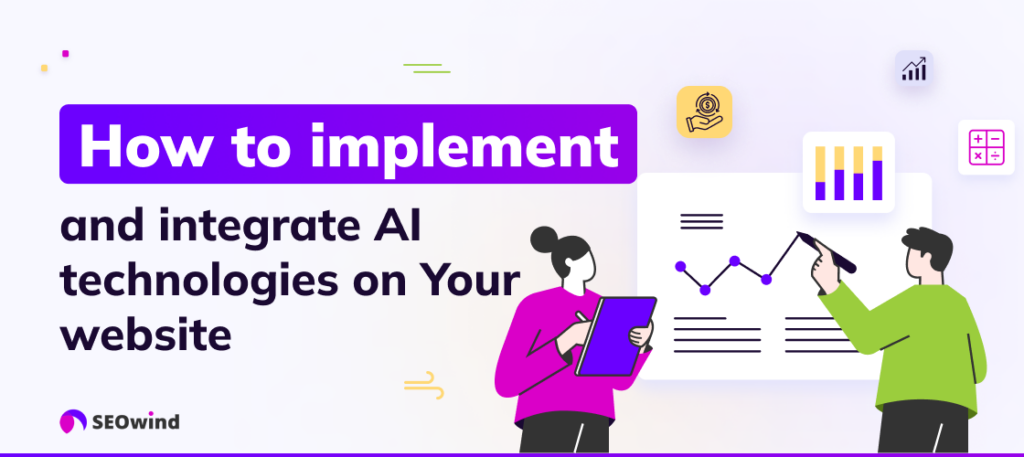
Let’s assume you’re convinced about the power of AI for boosting website traffic. That’s awesome! But how do you get started with AI and seamlessly integrate these tools into your existing strategy? Fortunately, it’s not as complicated as it might seem.
The first step is identifying your needs. What are your website’s pain points? Perhaps you struggle with creating engaging content, or maybe personalizing the user experience feels impossible. AI tools like chatbots can handle customer inquiries, freeing up your time to focus on other tasks. Or, consider AI-powered analytics platforms to gain deeper insights into user behavior and preferences.
Once you have a clear understanding of your needs, start exploring the plethora of AI tools available. Many offer free trials or demos, allowing you to test-drive the features before committing. Popular options include AI content generators, SEO optimization tools, and personalization platforms. Remember, the best AI for websites is the one that aligns perfectly with your specific goals and budget.
Frequently Asked Questions (FAQs) About Using AI to Boost Website Traffic
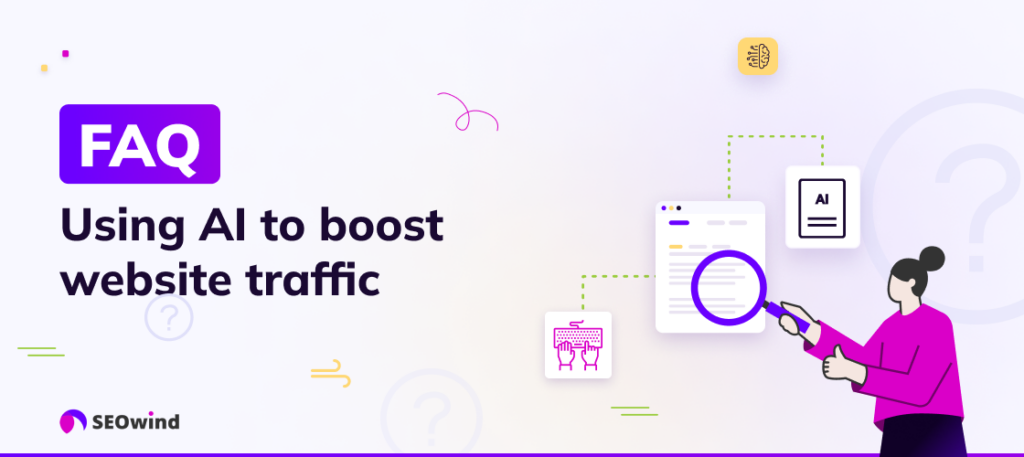
The world of AI can feel like vast, uncharted territory, especially when it comes to leveraging its power for your website. Let’s address some of the most common questions that arise when exploring AI’s ability to boost website traffic.
How do I optimize my website with AI?
Optimizing your website with AI isn’t about handing over the reins completely. Instead, we’re looking to forge a powerful partnership. AI tools can analyze vast amounts of data and identify patterns we might miss. This insight allows you to make data-driven decisions to enhance various aspects of your website. Here’s how:
- Content Optimization: AI can analyze your existing content and suggest improvements for better SEO performance. It helps you identify relevant keywords, optimize content structure, and even suggest internal linking strategies.
- User Experience (UX): AI can analyze user behavior on your website and identify areas for improvement. This could involve optimizing page load times, improving navigation, or personalizing content to individual user preferences.
- Technical SEO: AI-powered tools crawl your website and detect technical issues that hinder search engine rankings. This includes broken links, missing meta descriptions, and issues with mobile responsiveness.
How to use AI to improve SEO?
AI can be a game-changer for your SEO strategy. Here are some key ways to utilize it:
- Keyword Research and Analysis: AI tools help you uncover valuable keywords that align with your target audience’s search intent. They can also analyze competitor strategies and identify keyword gaps for you to capitalize on to get more website visits.
- Content Creation and Optimization: As we discussed earlier, AI writing assistants are invaluable for generating high-quality content. These tools help you overcome writer’s block, optimize content for specific keywords, and ensure your content aligns with SEO best practices.
- Rank Tracking and Analysis: AI-powered SEO platforms can track your website’s search engine rankings over time and provide insights into the effectiveness of your SEO efforts. This data allows you to make necessary adjustments and stay ahead of the competition.
What are the best AI website traffic generation tools?
The “best” AI tool depends on your specific needs and budget. However, some popular options include:
- SEOwind: This AI writing assistant excels at generating various forms of content while adhering to SEO best practices.
- SurferSEO: This platform offers comprehensive on-page optimization analysis and content editing tools to help improve your website’s search engine visibility.
- Jasper: Another versatile AI writing tool known for its ability to create different content formats.
- MarketMuse: This platform focuses on content strategy and optimization, providing AI-driven insights to improve your content’s relevance and authority.
The easiest hack to double your organic traffic with AI
While there’s no magic button, the most effective way to significantly increase your organic traffic with AI is by combining AI-powered content creation with a deep understanding of your target audience and search intent. By using AI to generate high-quality content that resonates with your audience’s needs and optimizing it for relevant keywords, you can attract more visitors and establish your website as a valuable resource in your niche.
